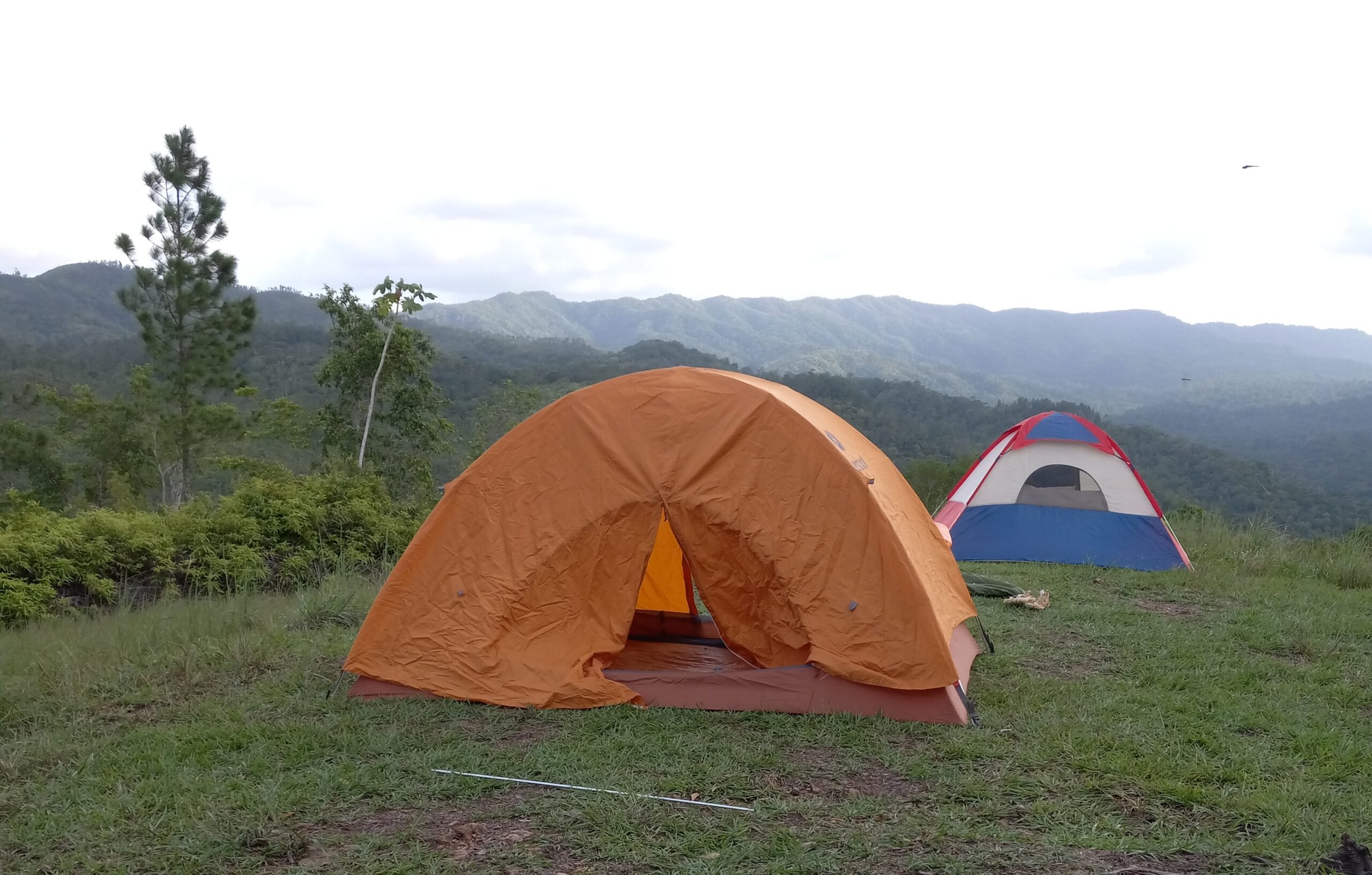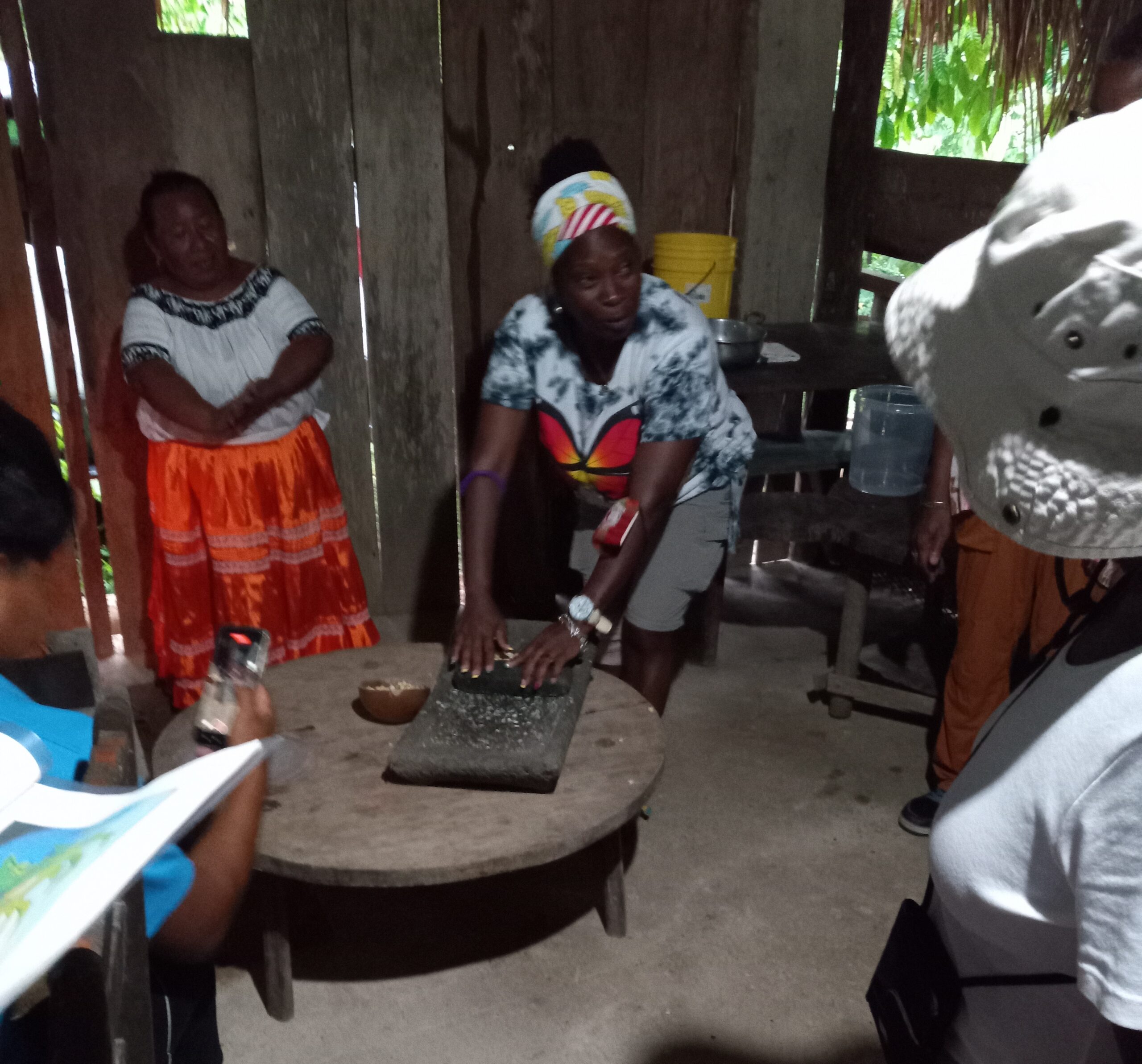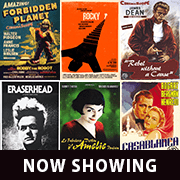Editor’s Note: This is Part 7 of a series by Olasee Davis on the St. Croix Hiking Association’s recent trip to Belize. Read Part 1 here, Part 2 here, Part 3 here, Part 4 here, Part 5 here, and Part 6 here.

This is the seventh and final article in the series on the St. Croix Hiking Association members’ adventures in Belize. Prior to this article, I spoke about the Cockscomb Basin Wildlife Sanctuary and the adventure hikers had exploring the wildlife sanctuary. The adventure continues in this wilderness area, where the last time I mentioned the waterfalls deep in the valley of the watershed of South Stann Creek.

It is an area of higher forest density and is relatively unexplored from the standpoint of mapping plants and wildlife species, Mayan ruins and other natural and historical resources of the wilderness. Nevertheless, we started to climb the steep slopes from the waterfalls back up to the mountaintop where we would camp overnight. Surprisingly, there was not as much difficulty hiking up the trail path as when we hiked down to the waterfalls.
Ben, our tour guide, and his helpers assisted us in setting up our tents and hammocks. One or two of the hikers gathered wood to light a three stone fire to cook. We ate and talked for awhile, then got ready to rough it, sleeping in the tents and hammocks hanging from poles of the opposite side, under a shed. As night fell, the temperature dropped. Soon it became pitch dark. You couldn’t see your hands in front of your face. The heaven was beautiful with billions of stars.
What can I say, we loved it. Everyone settled in their respective places for a good night’s rest in the wilderness. Not too long after, it started to rain. It rained and stopped and rained again. Meanwhile, I was contemplating going outside of my tent, as we men would say, “to take a leak.” Then, I remembered there are jaguars out there. As the old people would say, “Oh’ God send help!” I found myself procrastinating on whether I should go outside to the “bush bathroom.” Finally, I went and did what I had to do and rushed back into my tent.

Suddenly, it really started to rain, with thunder and lightning. The sky opened up. The wind picked up tremendously. Next thing I knew, water was coming into my tent. Amy Dreves, my colleague from UVI better known as the “Bug Doctor,” and Tim, her husband, known as the “Fishman,” were in the next tent celebrating their anniversary. Anniversary! Well, the wind almost knocked us off the mountaintop, and we ran over to the other hikers, supposedly sleeping in their hammocks.
They too were soaking wet, and their hammocks were swinging from side to side with the wind and rain. There we were, wondering what to do. Ben, our tour guide, wanted to know if this was a hurricane. I said to him, “Have you ever experienced this kind of weather in these mountains?” He said, “No.” We hikers exclaimed, “What?” We had two choices. We could stay in the mountains for eight hours in wet clothes and possibly increasingly dangerous conditions, or hike down in the dark with our flashlights. Believe me, this was an adventure, roughing it out in the mountains in Belize.
We decided to hike down the mountains in the pitch dark with our flashlights in our hands, backpacks on our backs, with water dripping off them. Ben led us down the mountain, flashing his flashlights from side to side. First, I thought, he was looking out for jaguars in the forest. He was looking for tree branches that might have fallen in the path of the trail, due to heavy rains in the mountains. At last, we arrived safely to the cabins.
Talking about adventure, the forest became alive with loud noises from all sorts of creatures. You could hear birds, frogs, and other creatures moving in the forest. Even at the cabins, the forest was alive with creatures. With hospitality from those who stayed in the cabins, we hikers from the mountain found beds in the cabins that night to sleep. I slept in my wet clothes until the morning broke, since my clothes in my backpack were wet. At daybreak, the other hikers who camped in the cabins expressed their joy at seeing us, safe. They were wondering how we made out camping on the mountain. They too had experienced lighting and thunder at the cabins, which caused them concern about us up there. Of course, we all hugged each other, told jokes, and laughed about our adventures at Cockscomb Basin Wildlife Sanctuary.
We ate breakfast that morning at the headquarters of the wildlife sanctuary. Later that morning, we drove down to the Mayan Center. We had two choices. One group could visit the chocolate factory, which would include a tour and an explanation of the process of making different products from cocoa. The other group would visit a Mayan residence. I choose the Mayan residence.

It was our tour guide Ben’s home that we visited and met his wife there. Ben explained to us how they built their houses traditionally with a thatch roof. His wife explained to us the traditional way of cooking and then we assisted her in the cooking and dining area of their home. Hikers would be helping to prepare lunch for the entire group. One popular food preparation is making tortillas from corn, which is a major staple food for the Mayan culture.

Vivian St. Juste Schweizer and Jerry Prince, two members of the hiking association, helped grind the corn the traditional way to make enough tortillas for everyone. Shirley Robinson, on the other hand, helped with the seasonings and spices for the pot. It was amazing seeing Mayan food prepared the traditional way. What an education for us hikers to participate in. The other group who attended the chocolate factory tour joined us for lunch.
As we held hands together and bowed our heads for prayer, Cathy Prince, the president of the hiking association, thanked the family for having us and blessed the food in English. Ben blessed the food and fellowship in the Mayan language. I would say we had a great time exploring Belize’s rich history and culture. It is a place that will forever be embedded in our minds, of adventure and the heart of the people.

On our last morning, with our backpacks and suitcases in our hands and ready to travel back home, nature amazed us again with thousands upon thousands of dragonflies flying in the sky above us at our once temporary home, Pals On the Beach hotel.
— Olasee Davis is a bush professor who lectures and writes about the culture, history, ecology and environment of the Virgin Islands when he is not leading hiking tours of the wild places and spaces of St. Croix and beyond.










